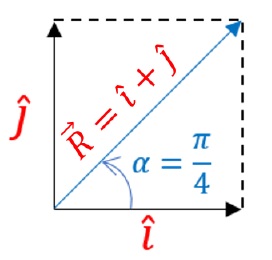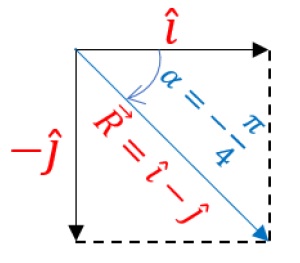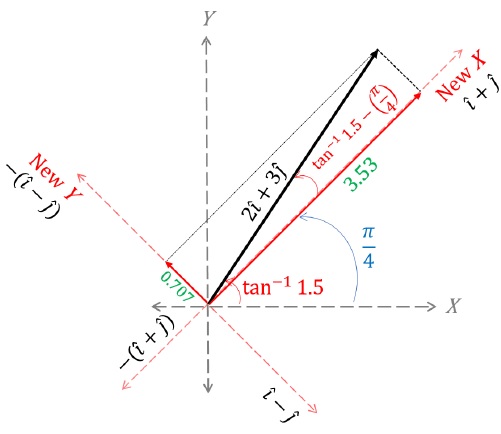Vectors Problem Example 3
Description:
Problem
î and ĵ are unit vectors along x and y axis respectively.
1. What is the magnitude and direction of î + ĵ , and î − ĵ ?
2. What are the components of a vector A→ = 2î + 3ĵ along the directions of î + ĵ and î − ĵ ?
Solution
Part 1
To calculate î + ĵ , add unit vectors, î and ĵ , using Parallelogram Law.

|R→| = |î + ĵ| = √12 + 12 + 2 × 1 × 1 cosπ2 = √2
tan α = 1 sinπ21 + 1 cosπ2 = 1
α = tan-11 = π4
To calculate î - ĵ , add unit vectors, î and -ĵ , using Parallelogram Law.

|R→| = |î - ĵ| = √12 + 12 + 2 × 1 × 1 cos(-π2) = √2
tan α = 1 sin(-π2)1 + 1 cos(-π2) = -1
α = tan-1-1 = -π4
Part 2
We have to calculate components of A→ = 2î + 3ĵ , along (î + ĵ) and (î − ĵ).
Method −
Extend the (î + ĵ) and (î − ĵ) vectors [obtained from the last part] along their directions to create new X and Y-axis respectively. (As shown in the figure below)
Draw perpendiculars from arrow head onto the new X and Y axes as shown in the figure. (We follow the same process of resolution as we normally do, only with one change of choosing new directions as X and Y)
Calculate the magnitude of A→ and the angle between A→ and the new X-axis.
|A→| = √22 + 32 = √13
Angle = tan-11.5 - (π4)
Write the magnitude of components along each axis.

Magnitude of component along (î + ĵ) [the new + X axis] = √13 cos[tan-11.5 - (π4)] = 3.53
Magnitude of component along (î - ĵ) [the new - Y axis] = √13 sin[tan-11.5 - (π4)] = -0.707

